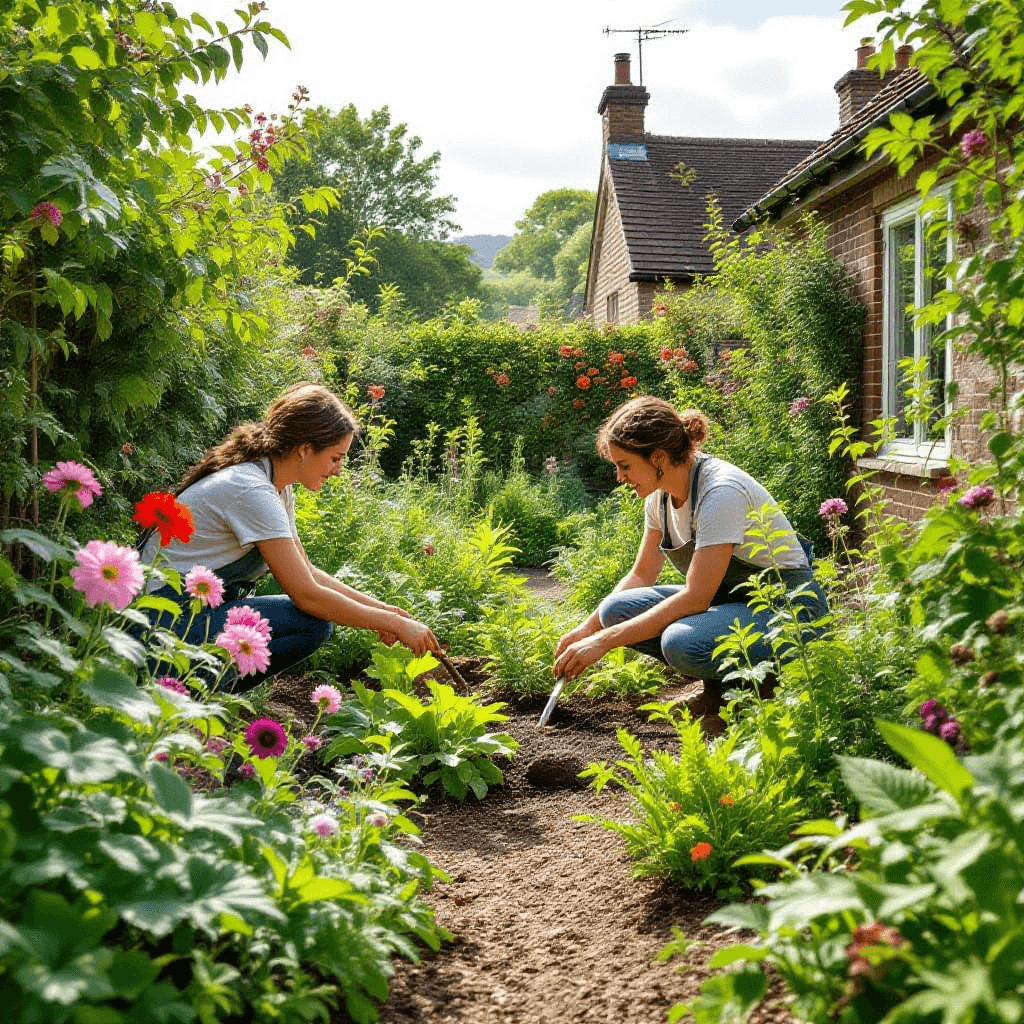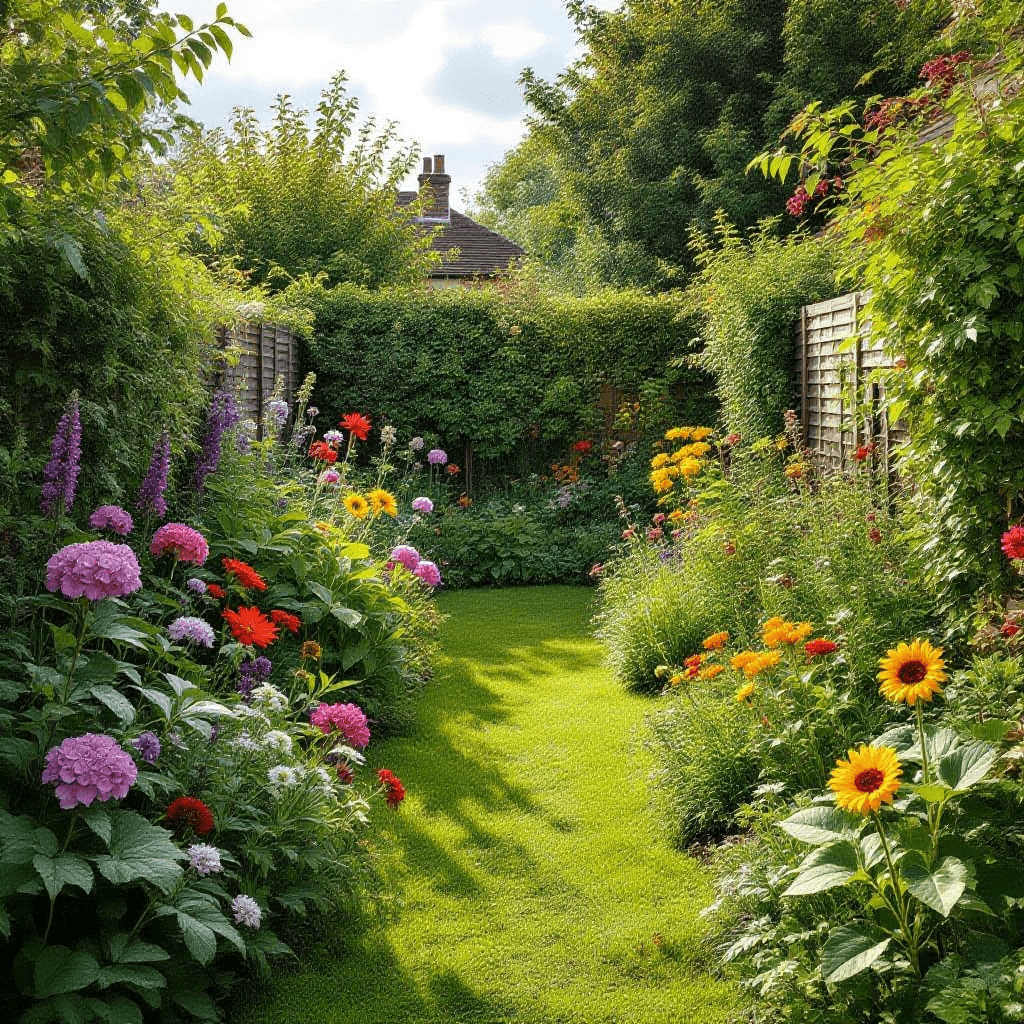Understanding Permaculture: Principles and Ethics
Permaculture is a design philosophy that aims to create sustainable and regenerative systems through the thoughtful arrangement of natural resources. This holistic approach integrates environmental elements, human needs, and the principles of ecology to form a cohesive system that benefits both nature and humanity. Central to permaculture are three core ethics: earth care, people care, and fair share. The first, earth care, emphasizes the importance of protecting natural ecosystems and ensuring that their health is maintained for future generations. Through practices such as regenerative agriculture, gardeners can enhance soil fertility, promote biodiversity, and contribute to carbon sequestration.
The second principle, people care, focuses on nurturing the well-being of individuals and communities. This involves creating systems that not only provide food and shelter but also foster social equity and support healthy lifestyles. By encouraging community engagement and shared resources, permaculture helps establish connections among gardeners and fosters a culture of cooperation and mutual aid.
The third ethic, fair share, advocates for the equitable distribution of resources and opportunities. This includes not only sharing surpluses from gardens but also ensuring that all community members have access to the knowledge and tools necessary for sustainable gardening practices. By promoting fairness, permaculture helps create resilient communities that can adapt to environmental and economic challenges.
In addition to these ethics, permaculture is guided by twelve design principles that support sustainable gardening practices. These principles, such as observing and interacting, catch and store energy, and use and value renewable resources, encourage gardeners in the UK to tailor their practices to local environmental conditions. By embracing these principles, individuals can develop regenerative gardens that contribute positively to their ecosystems, while also ensuring their own resilience in the face of climate change and other challenges.
Elements of a Permaculture Garden Design
Creating a successful permaculture garden design requires careful consideration of several essential elements. The foundational principle is to establish a well-thought-out layout that optimizes space and encourages biodiversity. Zoning within the garden allows for the efficient organization of different plant species and functionalities, promoting an integrated ecosystem. For instance, the placement of perennial plants near the kitchen minimizes walking distances and enhances accessibility.
Plant selection plays a pivotal role in permaculture, with a focus on diversity to create a resilient garden. Companion planting, which involves growing compatible plants together for mutual benefits, improves soil health and reduces pest populations naturally. For instance, interplanting nitrogen-fixing legumes with heavy feeders can enhance fertility and reduce the need for synthetic fertilizers. This method fosters a balanced symbiosis that proves advantageous for both flora and fauna.
Integrating animals and insects into the garden is another crucial component of permaculture design. Chickens or ducks can assist in pest control, while bees and beneficial insects such as ladybugs may promote pollination and help combat harmful pests. The presence of diverse species establishes a dynamic environment that can adapt to varying conditions and challenges.
Water management techniques are essential in creating a sustainable garden. Utilizing methods such as rainwater harvesting and swales can effectively manage excess water and improve drought resilience. These strategies contribute to the overall health of the garden, allowing it to thrive even in the face of climate variability. Furthermore, creating microclimates through structures like trellises or shade-providing plants can help mitigate temperature extremes and protect vulnerable plants.
These interconnected elements of permaculture garden design collectively contribute to a regenerative ecosystem that not only thrives independently but also bolsters resilience against the challenges posed by climate change.
Implementing Regenerative Practices in the UK Climate
Within the context of the UK’s unique climate, implementing regenerative practices is essential for fostering sustainable gardening. The variability of weather patterns necessitates adaptive techniques that optimize soil health and promote biodiversity. One effective method is no-dig gardening, which minimizes soil disruption. By layering organic matter, such as compost or mulch, on the soil surface, gardeners can enhance soil structure, retain moisture, and support beneficial organisms. This technique not only boosts fertility but also helps in carbon sequestration, which is crucial for combating climate change.
Another critical aspect of sustainable gardening in the UK involves composting. By recycling organic waste, gardeners can produce nutrient-rich compost that enriches the soil while reducing landfill contributions. This practice aids in fostering a healthy ecosystem within the garden, as compost introduces diverse microorganisms that improve soil life and fertility. To maximize the benefits, it is advisable to maintain a balanced compost ratio of green materials, such as kitchen scraps, to brown materials, like dry leaves, ensuring optimal breakdown and nutrient availability.
Additionally, rainwater harvesting can be pivotal in promoting sustainable water usage. By collecting rainwater in barrels or cisterns, gardeners can utilize this resource to irrigate their plants, especially during dry spells. This practice not only conserves water but also reduces reliance on municipal supplies, making gardens more self-sufficient. Crop rotation is another vital technique that enhances soil health and biodiversity. By rotating different plant families in assigned plots, gardeners can prevent pest build-up and enhance soil fertility through varied nutrient requirements from plants.
Ultimately, addressing the challenges of the UK climate with these regenerative practices not only enhances productivity but also contributes significantly to environmental sustainability. By integrating these techniques into their gardening routines, individuals can create a thriving ecosystem that supports both ecological health and food production.
Case Studies: Successful Permaculture Gardens in the UK
Across the United Kingdom, many gardeners have embraced permaculture principles to create sustainable and productive gardens that seamlessly integrate with their local ecosystems. These case studies exemplify the innovative approaches adopted by individuals and communities, showcasing how permaculture can address specific environmental challenges while enhancing biodiversity and resilience.
One notable example is the Goddard Garden in South London, a permaculture plot that was established on a former derelict site. The design focuses on companion planting and organic practices to cultivate a diverse range of vegetables, fruits, and herbs. The creators of this garden encounter challenges related to soil quality and urban pollution. However, they effectively implement strategies such as raised beds filled with enriched soil and the incorporation of cover crops to enhance fertility. As a result, Goddard Garden has not only become a local food source but also serves as an educational platform, inspiring other urban gardeners.
In northwest England, the Permaculture Garden at the National Botanic Garden of Wales showcases a wide array of permaculture techniques that promote biodiversity and sustainability. Here, designers employed key principles such as zoning and guild planting, which optimize space and yield. The garden features food forests, wetlands, and pollinator habitats, creating a sanctuary for wildlife. Amidst challenges such as changing climate patterns and pest management, the team has successfully demonstrated the viability of permaculture as a resilient gardening practice. This garden stands as a testament to the ecological impact of permaculture in a public setting, fostering community awareness and engagement.
Lastly, the Forest Farm in Somerset illustrates the potential of permaculture in rural areas. This farm implements agroforestry practices, combining trees and crops in a synergistic manner. The owners have navigated challenges like water conservation through rainwater harvesting and natural irrigation methods. Their efforts have enhanced soil health while increasing crop yields, contributing to local food security. Such successful implementations highlight the adaptability and effectiveness of permaculture design principles, making them relevant to diverse contexts across the UK.


